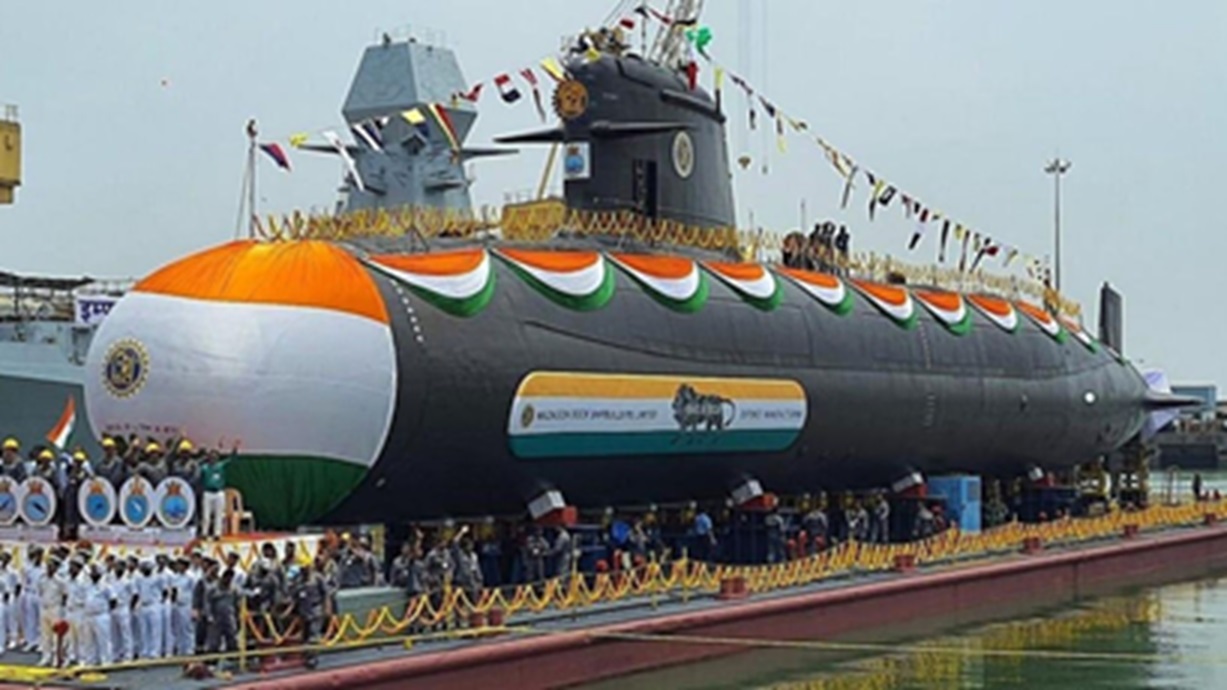The Indian Ocean Region (IOR) holds immense strategic importance due to its pivotal role in global trade and energy security. Approximately 80% of the world’s maritime oil trade passes through the Indian Ocean, facilitating about 40% of the world’s total trade by volume and 70% by value annually. India’s central location in the IOR positions it as a crucial player in maintaining the security and stability of these sea lanes, which are vital for international trade and energy transport. India’s economy is heavily reliant on the IOR, as a significant portion of its trade and energy imports, particularly oil and gas, are transported via these waters. Ensuring the safety and freedom of navigation in the IOR is therefore essential for India’s trade, economic activity, and energy security, making it a cornerstone of the country’s strategic and foreign policy initiatives. India’s shipbuilding industry holds significant potential due to its extensive coastline, strategic geographic location, and burgeoning domestic market. However, to fully realize this potential, the industry faces several challenges that need to be addressed through concerted efforts from both the public and private sectors. This article delves into the current state of India’s shipbuilding industry, explores its prospects, and highlights key initiatives and strategic imperatives that could shape its trajectory.
Overview of the Shipbuilding Industry
The shipbuilding industry globally is characterised by long gestation periods, high infrastructure costs, and the need for significant technological upgrades. It is also an industry where countries like China, South Korea, and Japan dominate due to their advanced infrastructure, high productivity, and supportive government policies. These countries have established themselves as leaders by heavily investing in shipbuilding technology and providing financial and regulatory support to their shipyards.
India, on the other hand, has over 20 operational shipyards with significant experience in delivering vessels across various segments, including fishing vessels, barges, harbour tugs, coastal vessels, and bulk carriers. Despite this experience, Indian shipyards face several disadvantages compared to their global counterparts. These include higher material and labour costs, lower productivity, and higher financing costs.
Challenges Faced by the Indian Shipbuilding Industry
High Infrastructure Costs and Long Gestation Periods: Building shipyards requires substantial capital investment in infrastructure, which often has long payback periods. This makes the industry capital-intensive and risk-prone.
Technological Upgradation and Skilled Workforce: The need for continuous technological upgrades and a shortage of skilled workforce are significant hurdles. Technological advancements are essential for improving productivity and competitiveness, while a skilled workforce is crucial for high-quality shipbuilding.
Dependence on Foreign Suppliers: Indian shipyards are heavily reliant on foreign suppliers for critical components and technology, which significantly impacts their operational efficiency and cost-effectiveness. This dependency extends to various essential parts such as engines, navigation systems, propulsion systems, and advanced materials that are not readily available or produced domestically at the required scale or quality. Consequently, this reliance results in several challenges, including increased costs due to import duties and taxes, longer lead times for procurement, and vulnerability to supply chain disruptions. Moreover, the need to source components from international suppliers often leads to delays in project timelines and escalates overall production costs. The absence of a robust domestic supply chain for high-tech maritime components further exacerbates these issues, making Indian shipyards less competitive compared to their global counterparts.
Cost Disadvantages: Indian shipyards face significant cost disadvantages when compared to their global counterparts, particularly those in China, South Korea, and Japan. These disadvantages stem from several factors, including lower labour productivity, higher material costs, and more expensive financing options. In India, labour productivity in the shipbuilding sector is considerably lower than in leading shipbuilding nations, resulting in longer production times and higher labour costs per vessel. This inefficiency is partly due to outdated technologies, inadequate training, and a lack of automation in many Indian shipyards. Material costs in India are also relatively high due to limited domestic production of essential raw materials such as high-grade steel, which must often be imported. This not only increases the direct cost of materials but also adds to the logistical expenses and import duties, further inflating the overall production costs. Moreover, Indian shipyards face higher financing costs, as interest rates for industrial loans in India are typically higher than those available to their competitors in East Asia. Compared to shipyards in China, South Korea, and Japan, Indian shipyards have a 25-30% cost disadvantage mainly due to lower labour productivity and higher material and financing costs. These countries have well-established domestic industries that produce a majority of the required shipbuilding components, allowing them to maintain lower costs and higher control over their production processes.
Regulatory and Financial Constraints: Stringent environmental regulations, financial constraints, and inadequate government support in terms of subsidies and tax incentives further impede the growth of the shipbuilding industry in India. For instance, countries like South Korea and China provide extensive financial support and incentives to their shipyards, enabling them to offer more competitive pricing on the global market.
Strategic Vision and Future Prospects
Despite these challenges, several strategic initiatives and policy interventions could significantly enhance the prospects of India’s shipbuilding industry. The “Maritime India Vision 2030” is one such initiative aimed at revitalising the sector by focusing on shipbuilding, ship repair, and ship recycling.
Demand Activation: There is a need to channelise domestic demand for Indian-built ships, especially for inland and coastal shipping, and defence. Escalating disincentives on old, imported vessels can also boost demand for new, domestically built ships.
Ecosystem Development: Developing a robust maritime cluster and ancillary industries is crucial. This includes enhancing infrastructure, promoting local component manufacturing, and creating maritime clusters that can support shipbuilding activities.
Fiscal Support: Financial assistance and tax incentives are vital to make Indian shipyards competitive on a global scale. Policies that provide financing assistance, promote local component manufacturing, and attract foreign direct investment (FDI) in shipbuilding and ancillary sectors are essential. Implementing favourable loan schemes, offering subsidies for infrastructure development, and creating tax incentives for research and development (R&D) in maritime technologies can significantly lower operational costs and boost the industry’s growth. India needs to implement policies that enhance productivity, reduce material costs through local production, and provide favourable financing options to the shipbuilding industry.
Skill and Capability Development: Establishing Centres of Excellence for maritime and shipbuilding education, enhancing training programmes, and developing design capabilities are critical steps. These measures will ensure a steady supply of skilled labour and improve the overall quality of shipbuilding. Initiatives to enhance the skill sets of the existing workforce through specialised training programmes and collaborations with international experts can bridge the skill gap and foster innovation within the industry.
Green Initiatives: Embracing green technologies and sustainable practices is becoming increasingly important. Initiatives like the Green Tug Transition Programme and building vessels powered by alternative fuels such as green hydrogen and ammonia can position India as a leader in sustainable shipbuilding. The adoption of eco-friendly ship designs and the integration of energy-efficient systems can not only reduce the environmental impact but also meet the stringent international regulations on emissions and pollution.
Opportunities for Growth
Defense Shipbuilding: The Indian Navy and Coast Guard are expected to invest significantly in fleet expansion and modernisation. This includes the addition of 180+ vessels by 2030, creating substantial opportunities for Indian shipyards. The focus on building a combat fleet of over 200 ships by 2027 further underscores the potential of defence shipbuilding. Indigenous shipbuilding for defence purposes not only enhances national security but also promotes self-reliance in critical technologies.
Commercial Shipbuilding and Repair: With the government’s push towards “Make in India,” there is a growing emphasis on building commercial vessels domestically. Additionally, the ship repair market presents a significant opportunity, especially with the potential to service foreign naval and commercial vessels operating in the Indian Ocean and Arabian Sea. Enhancing dry dock facilities and establishing world-class repair and maintenance hubs can attract international clientele and boost the commercial viability of Indian shipyards.
Global Collaboration: Indian shipyards are increasingly engaging in global collaborations to enhance their capabilities and competitiveness. These partnerships bring advanced technologies, best practices, and valuable expertise from established international players, thus addressing several inherent challenges faced by the Indian shipbuilding industry. For instance, Cochin Shipyard Limited (CSL) has entered into a strategic partnership with Italian shipbuilding giant Fincantieri, which has facilitated the transfer of sophisticated technology and provided critical know-how in constructing modern and complex vessels. Similarly, Hindustan Shipyard Limited (HSL) has collaborated with Turkish shipbuilder Anadolu Shipyard, leveraging their advanced design capabilities and modern production techniques. Such collaborations not only help in building high-quality vessels but also in training the workforce, enhancing local skills, and improving overall productivity. Moreover, global collaborations enable Indian shipyards to access international markets and tap into the extensive global supply chains. Joint ventures and strategic alliances with foreign companies open up new business opportunities, allowing Indian shipyards to participate in international tenders and expand their market reach. By fostering global collaborations, India can accelerate its journey towards becoming a leading shipbuilding nation, capable of meeting both domestic and international demands with world-class standards and competitive pricing. These partnerships, supported by conducive policies and government initiatives, can significantly elevate India’s position in the global shipbuilding industry, making it a formidable competitor on the international stage.
Technological Advancements: The global shift towards autonomous and electric vessels presents new opportunities. For instance, Cochin Shipyard Limited (CSL) is already constructing autonomous electric ferries and zero-emission vessels, showcasing India’s potential in this evolving sector. Investing in R&D to develop indigenous technologies for automation, smart ship systems, and sustainable maritime solutions can position India as a frontrunner in next-generation shipbuilding.
Conclusion
The future of India’s shipbuilding industry hinges on overcoming existing challenges through strategic interventions and robust policy support. The industry is poised for significant growth with initiatives like the Maritime India Vision 2030 and an increased focus on green technologies. By leveraging its strategic geographic location, enhancing its technological capabilities, and fostering global collaborations, India can position itself as a leading player in the global shipbuilding arena. The journey ahead requires a concerted effort from all stakeholders to transform potential into reality and propel India’s shipbuilding industry to new heights.
Title image courtesy: Indian Navy
Disclaimer: The views and opinions expressed by the author do not necessarily reflect the views of the Government of India and Defence Research and Studies

References
1. “Maritime India Vision 2030” report, Ministry of Ports, Shipping and Waterways, Government of India. This document outlines the strategic initiatives and policy interventions aimed at revitalising India’s maritime sector, including shipbuilding.
2. “Indian Navy’s Fleet Expansion Plans,” Indian Navy official website. This source provides insights into the Indian Navy’s plans for fleet modernisation and the anticipated investment in indigenous shipbuilding.
3. Annual reports and press releases from Cochin Shipyard Limited detailing their achievements in shipbuilding and repair, as well as their initiatives in green technologies and collaborations with international firms.
4. “India’s Shipbuilding Industry: Challenges and Opportunities” an article from The Economic Times discussing the current state of the shipbuilding sector in India, highlighting key challenges such as cost disadvantages and reliance on foreign technology.
5. “Make in India: A Push for Domestic Shipbuilding” an editorial from The Hindu, that examines the government’s initiatives to promote local shipbuilding and the potential impact on the economy.
6. “Global Shipbuilding Industry Overview” a report by the World Bank that provides comparative data on shipbuilding costs, productivity, and technological advancements across different countries, including India.
7. “Report on the Maritime Sector” by NITI Aayog, Government of India. This report discusses the potential of the maritime sector in India, including shipbuilding, and offers recommendations for policy improvements.
8. “Shipbuilding in India: The Way Forward” a position paper by FICCI (Federation of Indian Chambers of Commerce and Industry), that outlines the challenges faced by the industry and suggests strategic interventions.
9. “Green Shipping Initiatives” a report by the International Maritime Organisation (IMO) detailing global trends in sustainable shipbuilding practices and the importance of adopting green technologies in the maritime sector.
10. “The Future of Shipbuilding: Trends and Challenges” is a research paper that analyses the global shipbuilding landscape and the specific challenges faced by emerging markets like India.
11. “Reviving India’s Shipbuilding Sector: A Call for Action” an article from Indian Express that discusses the need for strategic investments and policy reforms to enhance the competitiveness of Indian shipyards.
12. “Navigating the Future of Shipbuilding” a report by McKinsey & Company that provides insights into technological advancements in the shipbuilding industry and their implications for emerging economies.








